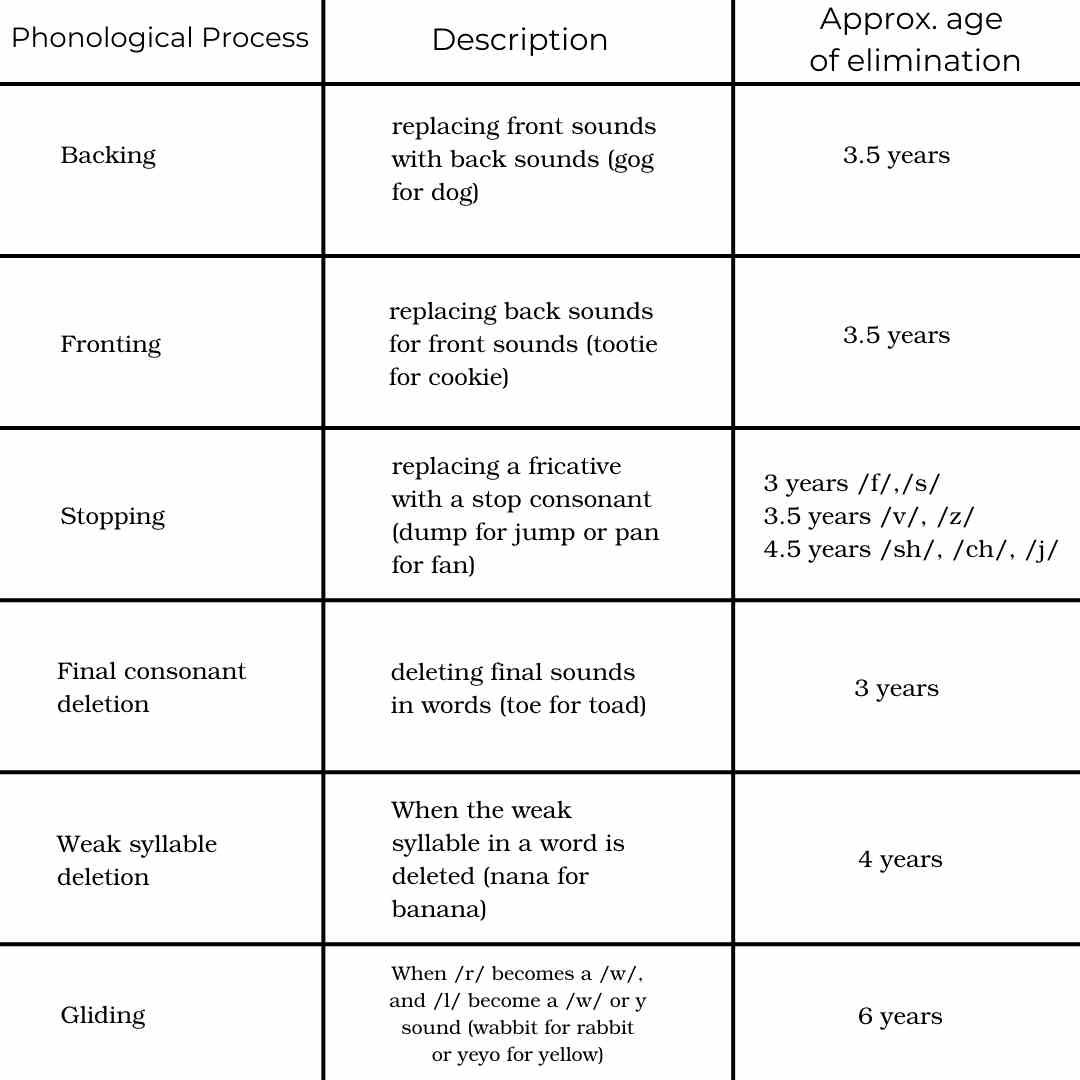Phonology and Phonological Disorders
Speech therapy deals with speech sound disorders, an umbrella term for many speech issues, including phonological and articulation disorders. We’ve already discussed the importance of articulation, but what is the difference between articulation and phonology? Keep reading to find out!
Phonology
Phonology is the “study of the speech sound (i.e., phoneme system of language, including the rules for combining and using phonemes.”1 Phonemes are the smallest units of sounds, or the letters in the alphabet. Each letter produces its own sound, and together these sounds make up words. Each language has its own phonological rules and patterns. Most of us don’t pay attention to it, but we constantly follow a language system.
Articulation vs. Phonology?
While phonology deals with the combination of different speech sounds, articulation is defined as “the ability to physically move the tongue, lips, teeth, and jaw to produce sequences of speech sounds, which make up words and sentences.”2
Trouble with articulation refers to trouble with producing certain sounds, while trouble with phonology refers to trouble organizing the sounds, mainly when certain sounds are grouped together. A person who struggles with a phonological disorder may be able to pronounce the sound individually but struggles when that sound is placed in between or with other sounds.Phonological Disorders
Phonological issues can have many causes, which are grouped into the categories of organic or functional. Organic problems are caused by known problems, such as deafness, while functional speech sound disorders do not have a known cause.
While developing, children usually go through something called a phonological process. It is difficult for children to pronounce different combinations of sounds at a young age, so they will substitute or omit certain sounds, such as some consonant combinations. This is normal and only becomes concerning if they continue doing this past the age of 3-4. Persisting problems become categorized as phonological disorders. It causes the child to be difficult to understand and usually will not go away without treatment.
Listed below are common phonological processes that are seen and the age at which they should be eliminated.
[The above chart was adapted from numerous sources, including our speech therapists’ knowledge. Please see The SLP’s Guide to Speech Sound Disorders: Articulation & Phonological Development, Phonological Processes by Little Bee Speech, and the Phonological Processes chart from Play Works Chicago for our inspiration]
If you are concerned that your child has a phonological disorder, seek the help of a speech-language pathologist to help evaluate what may be causing your child’s phonological problem. If the SLP deems it appropriate, they will create a treatment plan to help address any phonological issues your child may experience.
-
1. “Language in Brief,” ASHA, accessed 30 November 2022, https://www.asha.org/practice-portal/clinical-topics/spoken-language-disorders/language-in-brief/.
2. “Articulation (pronunciation and Talking,” KidSense, accessed 30 November 2022, https://childdevelopment.com.au/areas-of-concern/talking/articulation-pronunciation-and-talking/
-
“Articulation (pronunciation and Talking,” KidSense, accessed 30 November 2022, https://childdevelopment.com.au/areas-of-concern/talking/articulation-pronunciation-and-talking/
Holly, SLP, “The SLP’s Guide to Speech Sound Disorders: Articulation & Phonological Development,” SLP Now, 18 December 2021, https://blog.slpnow.com/the-slps-guide-to-speech-sound-disorders-articulation-phonological-development/
“Language in Brief,” ASHA, accessed 30 November 2022, https://www.asha.org/practice-portal/clinical-topics/spoken-language-disorders/language-in-brief/.

